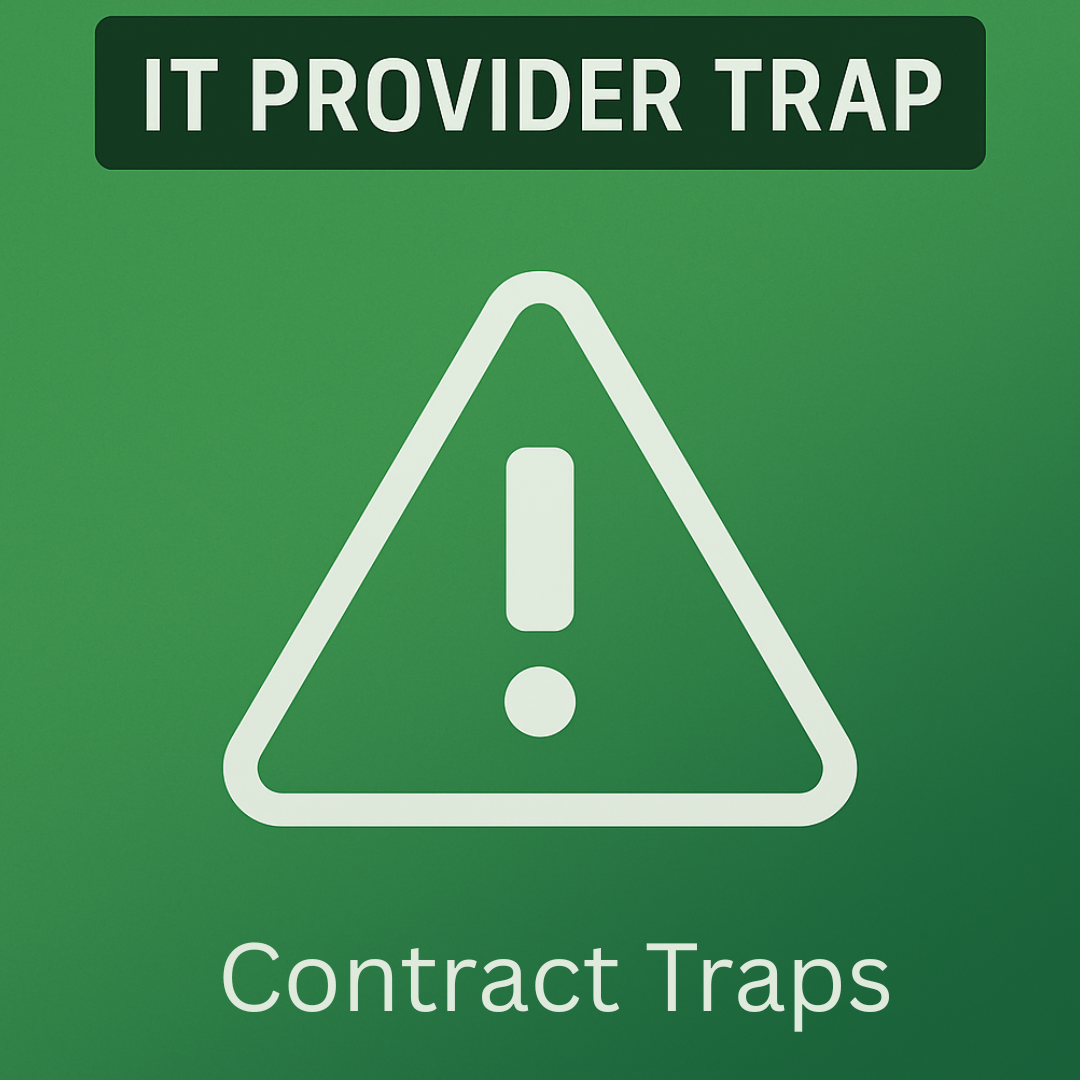Let’s talk about something that doesn’t get nearly enough scrutiny: your IT contract.
Not all of them are bad. Some are fair, transparent, and actually built to support your business.
But others? They’re built like bear traps. And once you’re in, good luck getting out.
We’ve seen it again and again. A business signs a “predictable” agreement—and ends up locked into years of weak service, mounting costs, and zero accountability.
Here’s what to keep an eye on:
1. The No-Escape Clause
You thought you were getting stability. Turns out, you signed a stay-until-you-bleed contract.
We had a client in a 5-year agreement that auto-renewed if they didn’t cancel 180 days in advance. Thankfully, they were diligent and got out on time—but not before enduring slow responses, poor service, and basic requests falling through the cracks. To add insult to injury, the contract tacked on an extra month of payment at the end for “transition assistance.”
2. Vague Expectations = No Leverage
Some contracts dodge specifics. No one’s asking for rigid SLAs or uptime guarantees—but you do need clarity on how things will work when it matters.
Look for plain, practical expectations like:
- How priorities are defined (what counts as “critical” vs. “normal”) and the target response windows
- How often you’ll get updates while something is being worked (communication cadence)
- The escalation path if things stall
- What’s included in the agreement vs. what’s project work
- Who owns administrative credentials and documentation—and how they’re handed over if you leave
If these basics aren’t spelled out, you have no leverage when service slips—and no clean way to hold anyone accountable.
3. Selling with Fear
We’ve seen industry trainers push this tactic. The playbook: lean hard on fear, paint worst-case scenarios, and crank up the pressure until you sign.
That’s FUD—fear, uncertainty, and doubt.
“Russia is coming to hack you specifically because they want your HVAC business.”
Yes, cyber threats are real. But real partnership means calmly showing where the gaps are and what needs to be done—not scaring you into a multi-year contract before you’ve had a chance to think.
Quick sniff test for FUD vs. real advice:
- Starts with a current-state assessment, not a scare story
- Explains risks and tradeoffs with a recommended plan, costs, and timelines
- Puts it in writing and lets you think it over
High-pressure, “sign today” tactics = red flag
Ask These Before You Sign Anything
- What’s actually included—and what’s not?
- How do you define and handle critical issues?
- What’s the auto-renew window and early-termination cost?
- Are price increases capped, and how are they communicated?
- Is there a “transition assistance” payment or any end-of-term fees?
- Do you verify backups, patches, and updates—or just say you do?
- What does it take to get out of this contract—plain language?
Bottom line: A predictable agreement is good. A one-sided trap is not. Read carefully, ask direct questions, and don’t be pressured into terms that only protect the provider.
Want to see more of what to avoid? Grab the full white paper:
The IT Provider Trap – How to Spot Danger Signs Before Your Business Pays the Price
Next up: Part 2 — “Flat-Rate Headaches: When ‘Unlimited Support’ Isn’t Unlimited at All”
